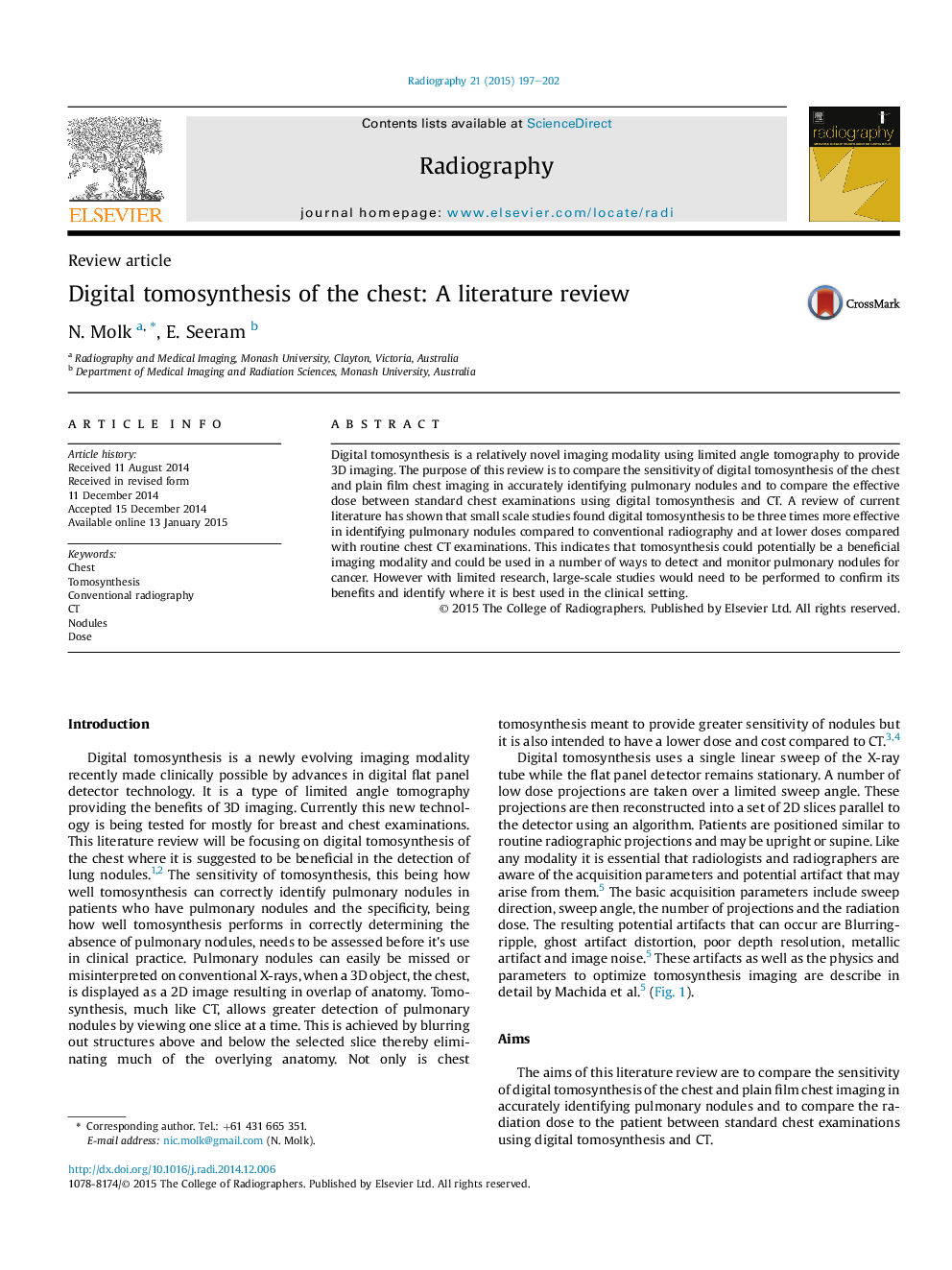| Article ID | Journal | Published Year | Pages | File Type |
|---|---|---|---|---|
| 5881171 | Radiography | 2015 | 6 Pages |
â¢The detection of pulmonary nodules is compared between tomosynthesis and plain film.â¢The effective dose of digital chest tomosynthesis and chest CT are compared.â¢The place of digital tomosynthesis of the chest in the clinical setting is explored.â¢Three times more pulmonary nodules are seen with tomosynthesis.â¢The effective dose of tomosynthesis is significantly lower than CT.
Digital tomosynthesis is a relatively novel imaging modality using limited angle tomography to provide 3D imaging. The purpose of this review is to compare the sensitivity of digital tomosynthesis of the chest and plain film chest imaging in accurately identifying pulmonary nodules and to compare the effective dose between standard chest examinations using digital tomosynthesis and CT. A review of current literature has shown that small scale studies found digital tomosynthesis to be three times more effective in identifying pulmonary nodules compared to conventional radiography and at lower doses compared with routine chest CT examinations. This indicates that tomosynthesis could potentially be a beneficial imaging modality and could be used in a number of ways to detect and monitor pulmonary nodules for cancer. However with limited research, large-scale studies would need to be performed to confirm its benefits and identify where it is best used in the clinical setting.
